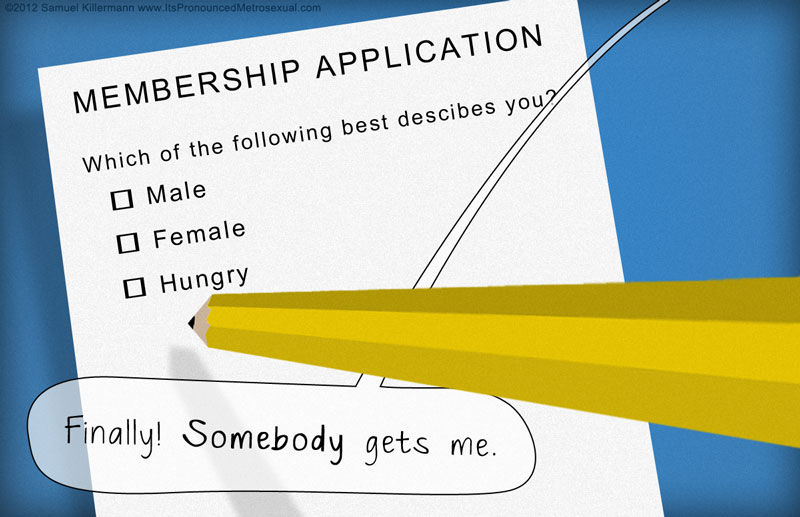A lot of people are unsure of how to make an inclusive gender or sex question on a form, and default to “are you male or female?” Let’s not do that. Read on for some best practices and suggestions to make your forms more gender inclusive.
The first question I would ask in response to this dilemma is “what relevance does gender have to your membership application process?” Oftentimes, I’ve found that the reason people ask for gender is simply because they always have. Is gender truly a relevant and necessary factor in making your selections (or whatever you’re doing with your applications?). In a lot of cases it’s irrelevant. If it’s irrelevant, don’t ask. Problem solved.
If you’re asking because you want to know what gender pronouns to use to describe a person, simply ask that (“What are you preferred gender pronouns?” providing options and a fill-in-the-blank).
But let’s assume you have thought through that first question and want to proceed with a gender question on your application. Below are are a few sample options/food-for-thoughts.
Sample Options/Food-for-Thoughts
Super simple solution, but one that is not easily sortable (in a spreadsheet):
I identify my gender as…
______ (fill in the blank)
If you don’t NEED gender, but would prefer to have it, here is one way you could do it:
I identify my gender as…
❑ Man
❑ Woman
❑ Genderqueer/Non-Binary
❑ ______ (fill in the blank)
❑ Prefer not to disclose
If you absolutely need to know gender, my next easy suggestion would be to simply remove the “not disclose” option:
I identify my gender as…
❑ Man
❑ Woman
❑ Genderqueer/Non-Binary
❑ ______ (fill in the blank)
If you’d rather not have a fill in the blank because it will complicate things (e.g., make it harder to sort a spreadsheet), but you want to be incredibly inclusive and specific, here’s another suggestion:
I identify my gender as…
❑ Man
❑ Woman
❑ Transgender
❑ Genderqueer
❑ Agender
❑ Genderless
❑ Non-binary
❑ Cis Man
❑ Cis Woman
❑ Trans Man
❑ Trans Woman
❑ Third Gender
❑ Two-Spirit
❑ Bigender
❑ Genderfluid
And if you’d rather have fewer options, even at the sake of inclusivity/specificity:
I identify my gender as…
❑ Man
❑ Woman . ❑ Genderqueer/Non-Binary
And FINALLY, if you need to know sex rather than gender (the only examples that pop into my mind for a reason why are medical), here’s a way you can do it and still be inclusive:
I identify my sex as…
❑ Female
❑ Male
❑ Intersex
❑ MtF Female
❑ FtM Male
A few additional thoughts
One of the things you’ll notice as a common thread throughout all of the questions is the prompt, “I identify my…” I recommend this because it begins the action as a form of empowerment, instead of other options I’ve seen that often take the power to decide away from the individual answering the question.
Also, consider how you are going to be using the data you’re collecting before you decide how to collect it. If you’re planning on matching people up based on gender (e.g., partners for activities, team relationships), you might ask for the applicants’ to report their gender but also ask them which gender they would feel most comfortable working with. Then you can use their responses to place them in self-described comfortable partnerships, or choose to challenge them if you would rather see them working outside of their comfort zone.
I’m not a big fan of exhaustive lists when trying to describe identities (see #4), because they are rarely exhaustive. And if you miss one or two, but include 15 others, those one or two get the sense of super-marginalization. (did I miss any in #4 that you know of?)
Finally, this is not an exhaustive list of options, nor is it necessarily all right. Share additional options, or revisions to the ones above, in the comments below!


